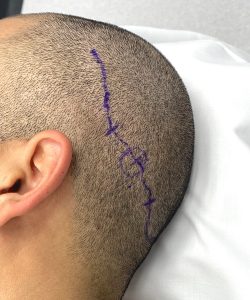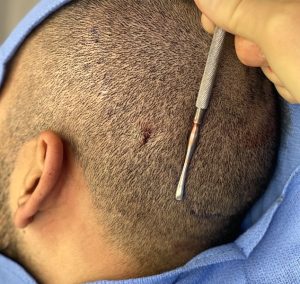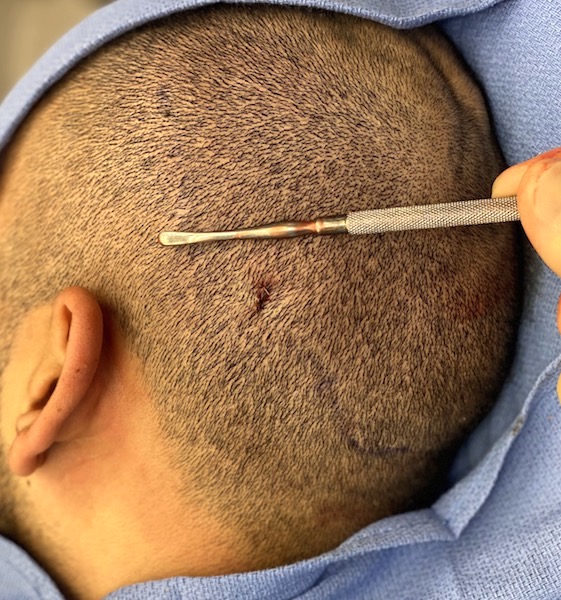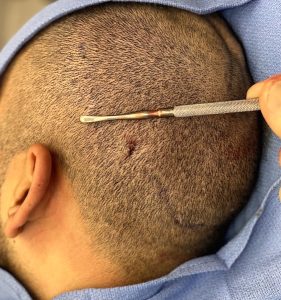The custom skull implant provides the most effective method of correction of various flat skull areas (e.g., planiocephaly) or a desire for a larger skull shape. Such computer-designed implants made from a solid silicone material offer the most advantages in skull augmentation because they can be placed through the smallest scalp incision…an important consideration in any type of elective aesthetic skull reshaping surgery.
With a computer-designed implant the goal in surgery is not about whether the implant has the right shape but rather getting it into the right position on the skull. (as per the preoperative implant design) While correct positioning on the skull is critical that alone does not assure a perfect aesthetic result. One uncommon but potential postoperative aesthetic issue is that of implant edging. This means that once the scalp has fully healed back down over the implant a visible edge of part of the implant may be seen. This potential issue is most relevant in shaved head males or those men with very closely cropped hair.


While this does involve using a small incision it is still largely a closed capsulotomy procedure. For many patients this procedure can be performed under local anesthesia. While I have only needed to perform this procedure three times in doing hundreds of skull implant placements, it usually provides a good resolution to the problem.
Dr. Barry Eppley
Indianapolis, Indiana




